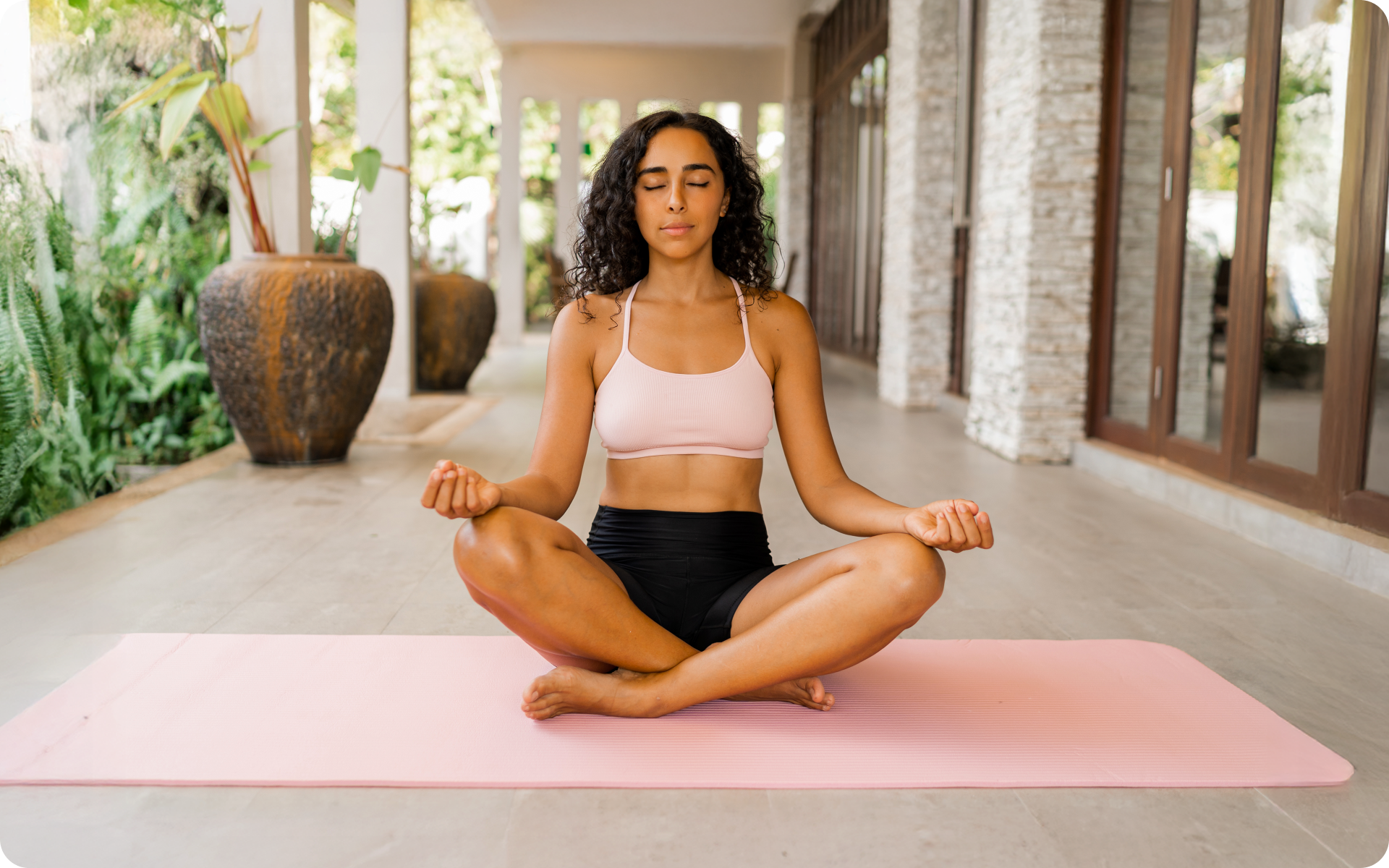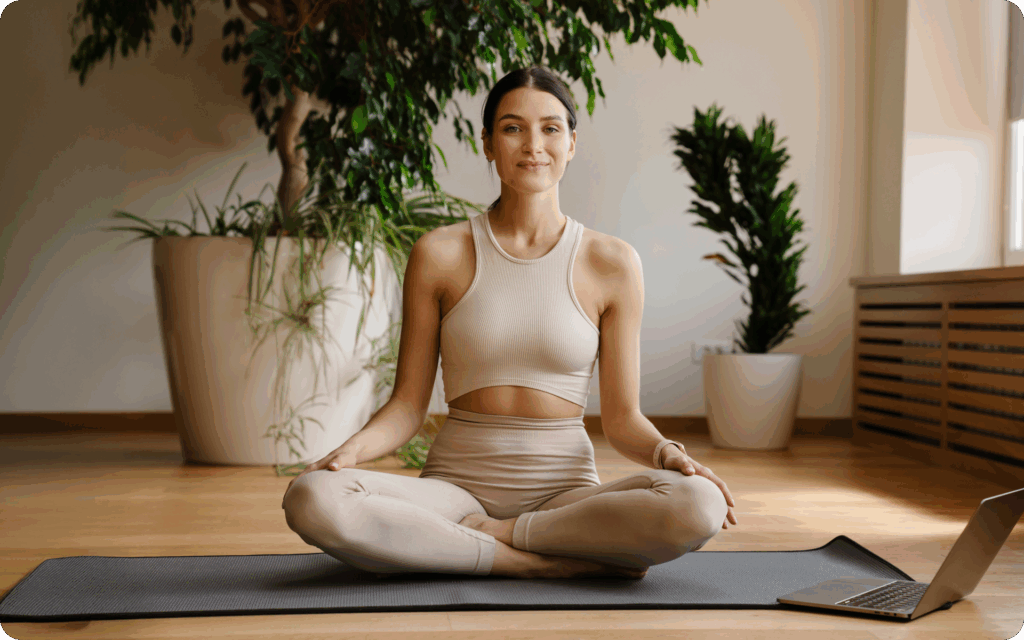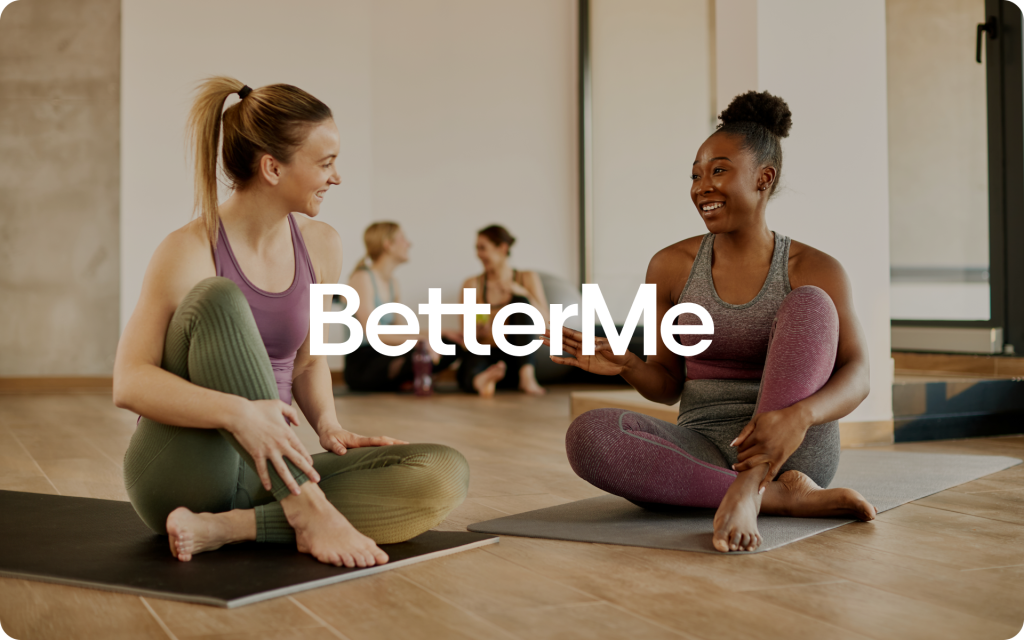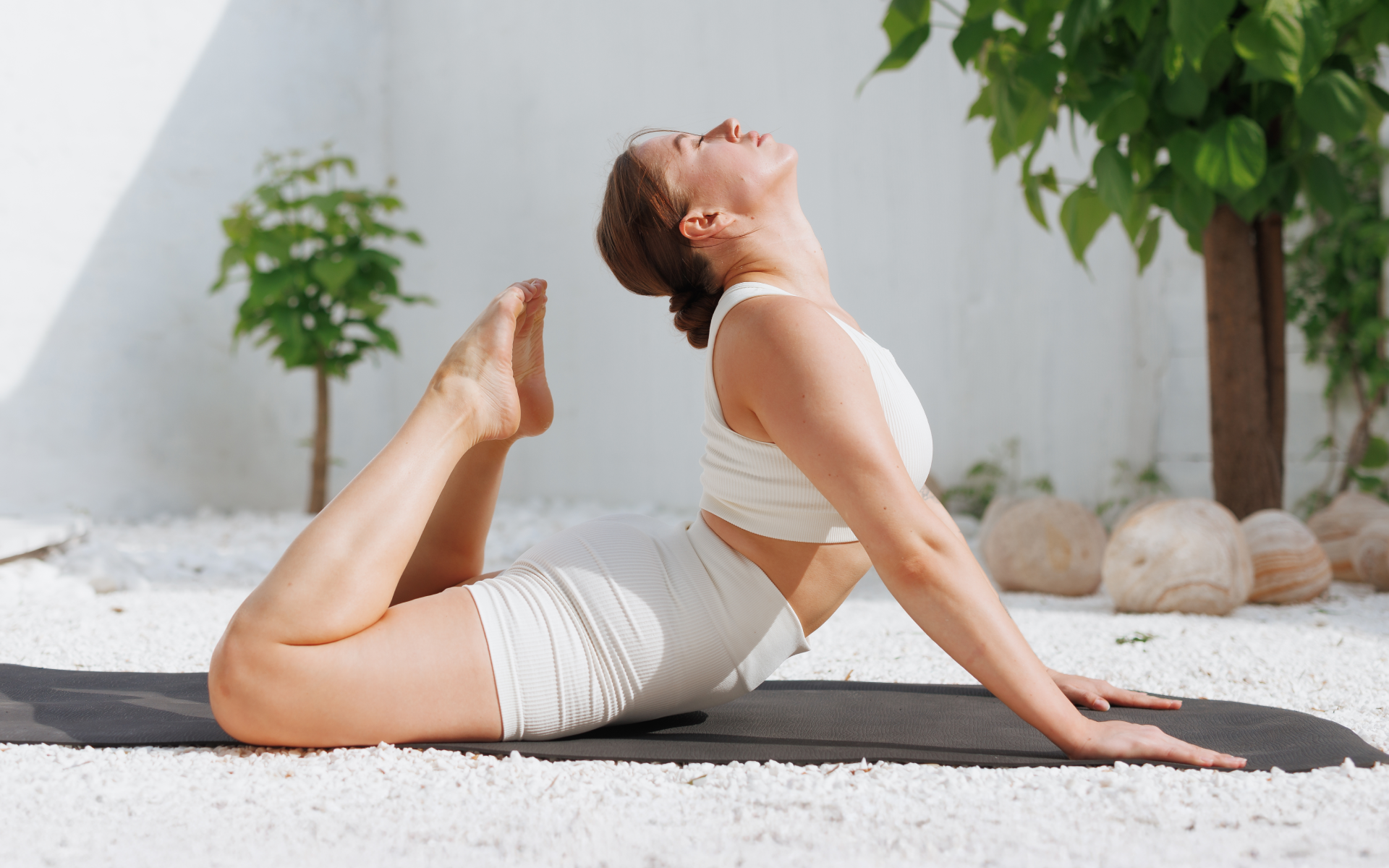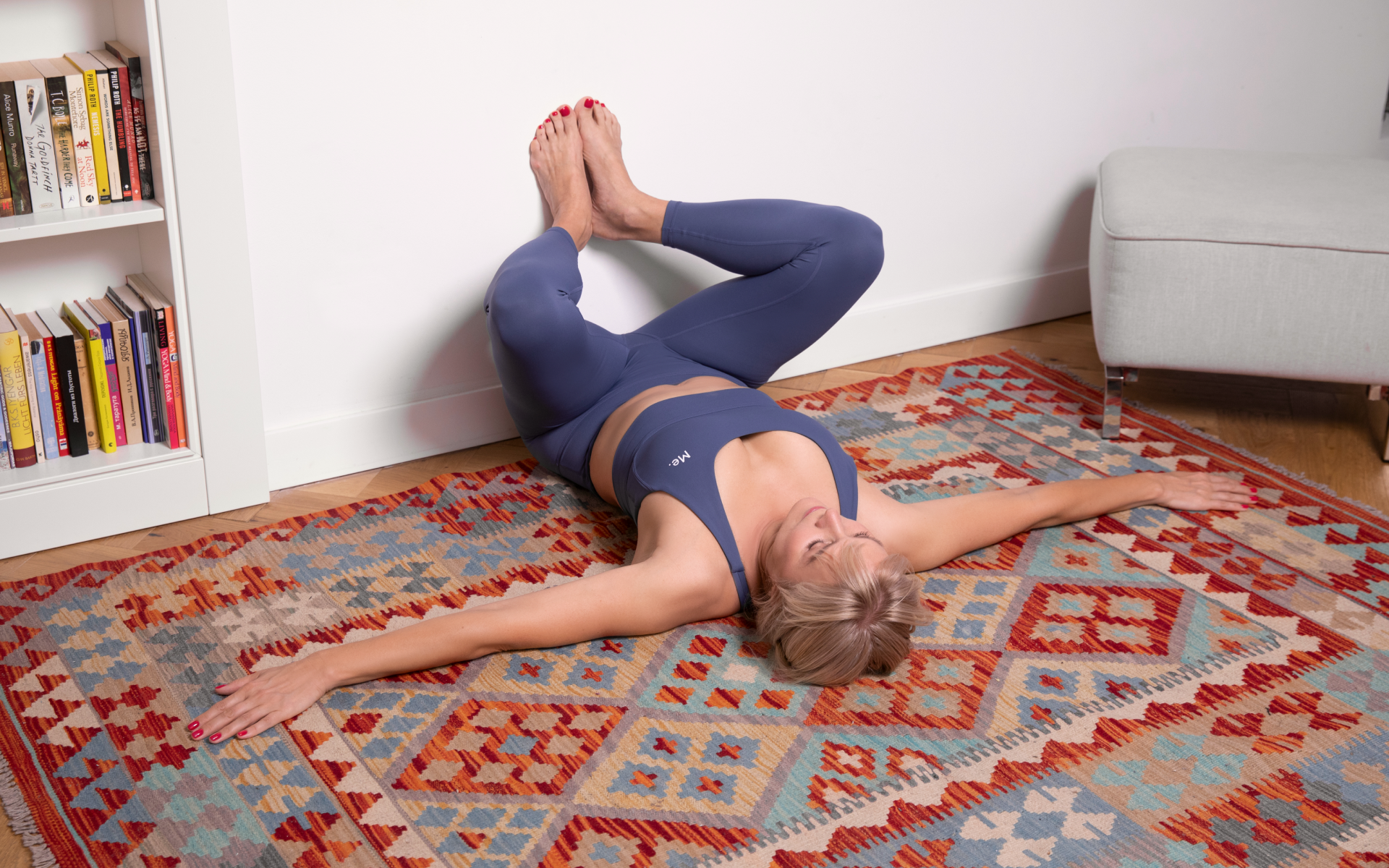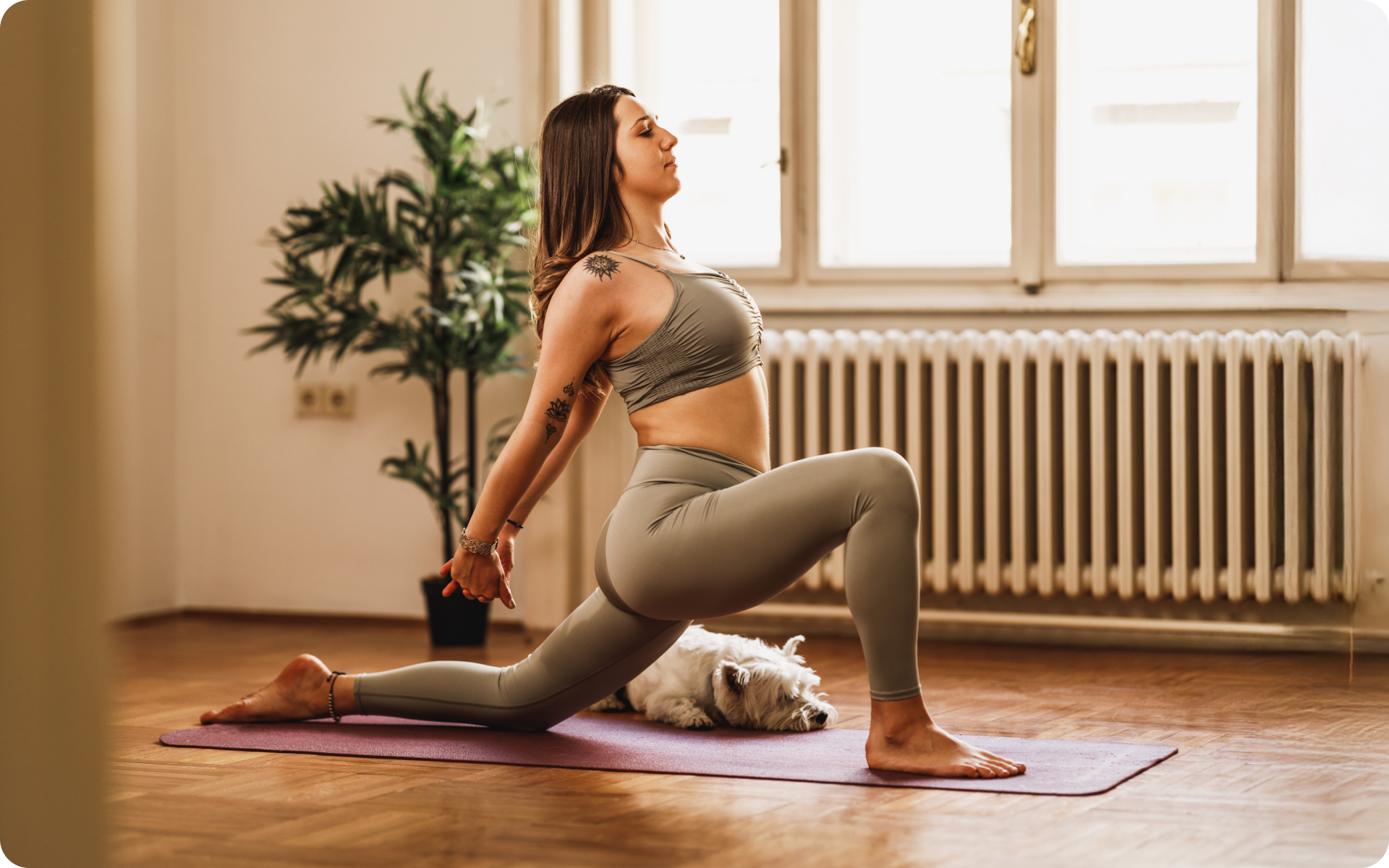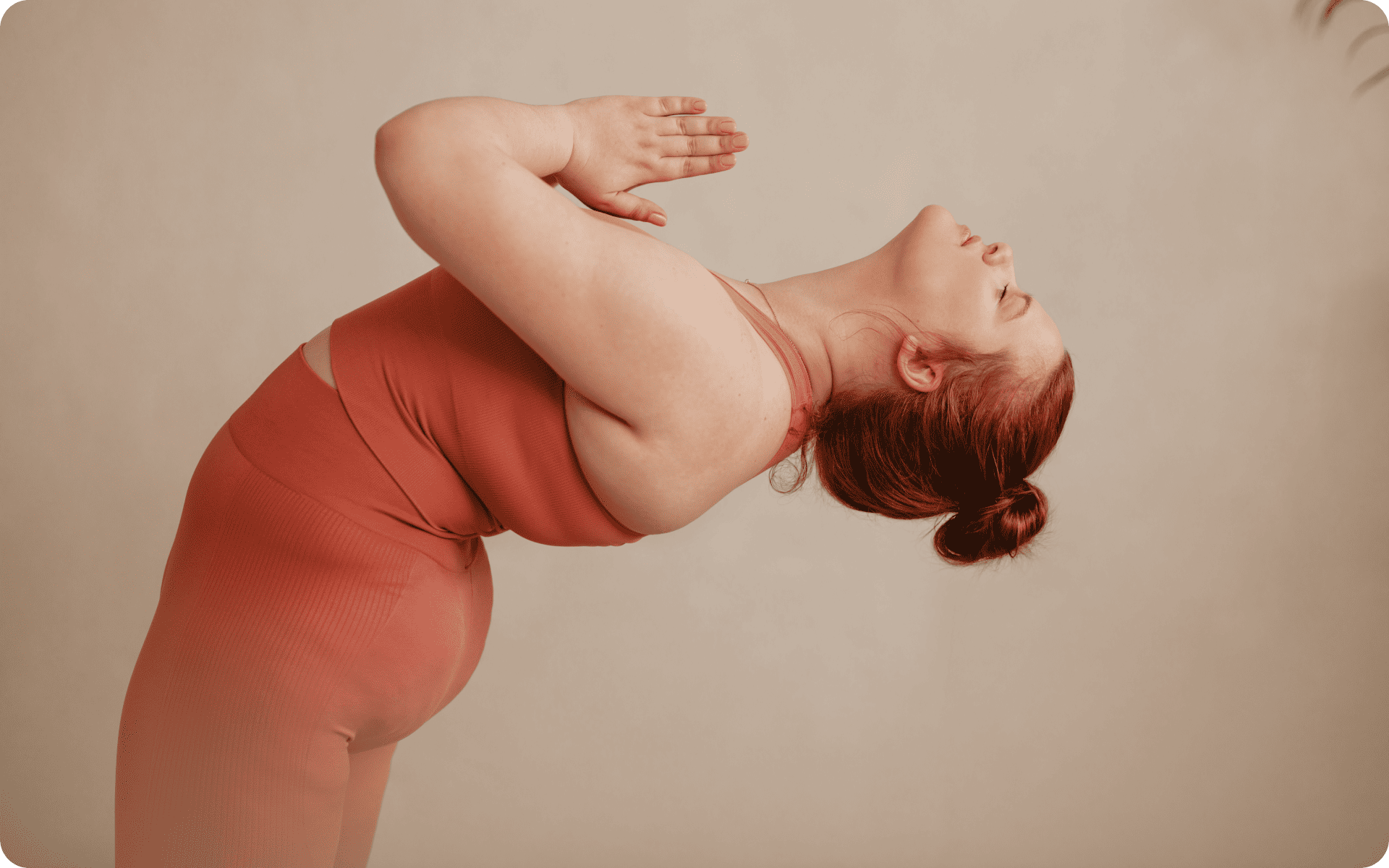Yoga is a pathway to self-discovery and spiritual growth, with four classical types serving as its foundational pillars: Karma Yoga, Bhakti Yoga, Jnana Yoga, and Raja Yoga. Each of these paths represents a unique approach to connecting the mind, body, and spirit, offering different techniques to help individuals find balance and purpose (1).
Modern yoga practices such as Hatha, Vinyasa, and Kundalini often draw inspiration from these traditions, creating accessible ways for us to incorporate yoga into everyday life.
Let’s take a closer look at these incredible paths and what they can mean for you.
What Are the 4 Most Common Types of Yoga?
Among the myriad paths yoga offers, four overarching types stand out as the foundation of its practice. These are Karma Yoga, Bhakti Yoga, Jnana Yoga, and Raja Yoga. Each of them takes a unique approach to spiritual growth and self-realization, but they are deeply interconnected.
Many modern yoga practices borrow and blend elements from these classical routes to create paths that suit different needs and lifestyles.
Here’s a closer look at these four types, their principles, and how their influence is felt today.
1. Karma Yoga: The Yoga of Action
Karma Yoga focuses on selfless service. It teaches that every action you take should be performed without attachment to its outcome. The goal is to align your actions with a higher purpose, fostering mindfulness and humility (2).
Core Principles:
- Act with intention, but without expecting rewards.
- Serve others as a way to grow spiritually.
- Use day-to-day activities as an opportunity for mindfulness.
Modern Practice:
Many people unknowingly practice Karma Yoga in their daily lives. Volunteering, helping others without ulterior motives, and practicing mindfulness while working all reflect this approach. Even in physical yoga classes, the philosophy shows up when practitioners are encouraged to focus on effort rather than perfection.
Reasons why BetterMe is a safe bet: a wide range of calorie-blasting workouts, finger-licking recipes, 24/7 support, challenges that’ll keep you on your best game, and that just scratches the surface! Start using our app and watch the magic happen.
2. Bhakti Yoga: The Yoga of Devotion
Bhakti Yoga is centered on love and devotion. This path invites an emotional connection to the universe, a higher power, or the divine. Through acts of devotion, practitioners cultivate unity and inner peace (3).
Core Principles:
- Surrender to a higher power or universal love.
- Engage deeply in practices such as chanting, prayer, or rituals.
- Approach life with gratitude and compassion.
Modern Practice:
Modern practices such as mantra chanting in yoga classes or guided meditations on love and compassion stem from Bhakti Yoga. This path appeals to those who lean toward faith or emotional expression and helps them connect spiritually through heartfelt practices.
3. Jnana Yoga: The Yoga of Knowledge
Jnana Yoga is the pursuit of wisdom. It emphasizes self-inquiry and intellectual exploration to understand the deeper truths of existence. This method is contemplative and relies on study and reflection (4).
Core Principles:
- Question the nature of reality and the self.
- Reflect on spiritual teachings, often through texts or meditation.
- Seek liberation through knowledge and understanding.
Modern Practice:
While Jnana Yoga may seem abstract, it often overlaps with mindfulness practices today. Yoga teachers who urge reflection on thoughts, emotions, and the meaning behind postures draw from its teachings. For scholars or introspective individuals, this path offers a deep and meaningful approach.
4. Raja Yoga: The Yoga of Meditation
Raja Yoga is the path of discipline and mental mastery. Often associated with the eightfold path described in the Yoga Sutras, it dives deep into practices such as meditation, breath control, and physical postures.
Core Principles:
- Discipline the mind and body to achieve inner peace.
- Practice meditation (dhyana) and breath control (pranayama).
- Follow the eightfold path, which includes ethical conduct, concentration, and self-restraint.
Modern Practice:
Most yoga classes today, particularly those that focus on asanas (postures) and structured routines, stem from Raja Yoga. Physical practices prepare the body for meditation, while breathwork helps with mental clarity. Yin, Vinyasa, and even guided relaxation practices are modern extensions of this system.
The Interconnectedness of Yoga Styles
While these four paths may sound distinct, they are deeply interconnected. For example:
- Karma Yoga promotes selflessness, which is aligned with the compassion that is found in Bhakti Yoga.
- Meditation in Raja Yoga often fosters intellectual clarity, which is closely tied to Jnana Yoga’s focus on wisdom.
- Chanting or devotion in Bhakti Yoga often shows up during traditional Raja Yoga sessions or modern practices.
Modern yoga pushes these boundaries even further. Practices such as Hatha Yoga or Kundalini Yoga merge Raja Yoga’s physical discipline with Bhakti’s devotional chants or Jnana’s self-awareness. This fluidity allows practitioners to explore the paths that resonate most deeply with their goals, combining aspects of all four.
Read more: Does Somatic Yoga Really Work? Here’s What You Need to Know
How Do the 4 Main Types of Yoga Support Different Goals?
The four main types of yoga offer distinct paths to personal and spiritual growth. Each one of them emphasizes a unique approach to achieving harmony in life (5).
Karma Yoga is all about serving others. It focuses on selfless action without attachment to outcomes. This practice helps cultivate humility, compassion, and purpose by emphasizing work done for the greater good.
It supports goals such as altruism, reducing ego, and creating a sense of fulfillment through service. It’s practiced through acts of kindness, volunteering, or contributing to a cause without seeking personal gain.
Bhakti Yoga fosters a deep connection to the divine or the universe through love and devotion. The practice centers on emotional expression, faith, and surrender. It supports goals such as cultivating love, overcoming negative emotions, and fostering spiritual connection. It’s practiced through chanting, prayer, rituals, or meditative acts of devotion.
Jnana Yoga is the path of wisdom and intellectual exploration. It encourages self-inquiry and understanding the nature of reality and the self. It supports goals such as seeking ultimate truth, self-discovery, and breaking free from ignorance. It’s practiced through the study of sacred texts, introspection, and deep philosophical questioning.
Raja Yoga, often called the “royal path”, emphasizes mental discipline through meditation and control of the mind. It involves developing mastery over thoughts and emotions. It supports goals such as achieving mental clarity, emotional balance, and spiritual enlightenment. It can be practiced through meditation, breath control, and integrating moral principles into daily life.
How Do Yoga Practices Differ in Purpose and Intensity?
The purpose of yoga can range from physical fitness to emotional well-being or spiritual connection. Different styles emphasize different goals. Yoga styles also vary significantly in intensity.
Here’s how they compare:
| Purpose | Yoga styles | Description | Intensity level |
|---|---|---|---|
| Physical fitness | Vinyasa Yoga, Power Yoga | Vinyasa: Fast-paced, focusing on strength, flexibility, and endurance. Power Yoga: A more intense version, with physically demanding sequences. | High |
| Relaxation and stress relief | Restorative Yoga, Yin Yoga | Restorative: Gentle and passive poses, supported by props, promoting deep relaxation. Yin: Long-held poses targeting tension and stillness. | Low |
| Mental clarity | Hatha Yoga, Kundalini Yoga | Hatha: Slow, deliberate movements with breathwork, promoting mindfulness. Kundalini: Combines poses, breathwork, and chanting to enhance awareness. | Moderate |
| Spiritual growth | Bhakti Yoga, Jivamukti Yoga | Bhakti: Devotional practices, including chanting and meditation. Jivamukti: Blends physical poses, philosophy, and meditation for spiritual insight. | Moderate to High |
It should be noted that most modern yoga styles borrow elements from each other. A Vinyasa class may include chanting during the warm-up (a nod to Bhakti Yoga) and a Hatha class may emphasize mindfulness from Raja Yoga principles. This blended nature makes yoga adaptable and accessible to everyone.
Which Type of Yoga Is Best to Start with as a Beginner?
Beginner-friendly classes are widely available and often labeled as “gentle” or “beginner”. These can help ease you into yoga without feeling overwhelmed. Remember, yoga isn’t about perfection, it’s about exploring your body and mind with patience and curiosity.
The best style to start with is the one you feel most drawn to.
Here’s a look at some beginner-friendly yoga styles, what they offer, and a few things you should keep in mind.
Hatha Yoga
Hatha Yoga is often considered to be the best starting point for beginners. It’s slower-paced and focuses on foundational poses and breathwork (6). Classes usually emphasize alignment and holding poses for longer periods, which gives you time to learn.
Why It’s Good for Beginners:
- You’ll gain a solid understanding of basic postures.
- It teaches breathing and mindfulness techniques.
- The pace allows time to adjust and refine poses.
Considerations:
Hatha may feel slow if you’re someone who enjoys fast-paced movement, but it’s an excellent way to build a strong foundation.
Restorative Yoga
Restorative Yoga focuses on relaxation and gentle stretching. It uses props such as bolsters and blankets to support your body in restful poses. This style is all about letting go of tension and finding calm (7).
Why It’s Good for Beginners:
- It’s gentle on the body, which makes it ideal for those with limited flexibility or mobility.
- Stress relief is a key benefit, particularly if you’re looking to unwind.
- Poses are held for several minutes, allowing time to explore your mind-body connection.
Considerations:
While deeply relaxing, it’s not a workout. If you’re looking for an active practice, you may want to pair this with another style.
Vinyasa Yoga
Vinyasa is a flowing, movement-based practice. It connects breath to each transition and often feels like a dance (8). Although some classes can be fast-paced, many beginner-level Vinyasa classes are available.
Why It’s Good for Beginners:
- It helps improve strength and flexibility.
- You’ll build endurance and get your body moving.
- It offers variety, so no two classes are the same.
Considerations:
Vinyasa can be challenging for complete beginners, particularly if the poses move quickly. Look for classes labeled “gentle” or “beginner” to ease into it.
Read more: Yoga Stretches for Beginners: How to Start When You’re Not Flexible
Which Type of Yoga Helps Most with Strength and Balance?
Certain yoga styles focus on engaging different muscle groups, refining coordination, and enhancing body awareness (proprioception). If your goal is to create a stronger, more stable body, here are some ideal choices:
Vinyasa Yoga
Vinyasa Yoga involves a dynamic flow of poses, each synced with your breath. This continuous movement engages multiple muscle groups, which helps build strength across your entire body (9).
The rhythm of Vinyasa mimics functional movement patterns, activating stabilizing muscles to support everyday physical tasks.
BetterMe: Health Coaching app helps you achieve your body goals with ease and efficiency by helping to choose proper meal plans and effective workouts. Start using our app and you will see good results in a short time.
Power Yoga
Power Yoga amps up the physical intensity, blending Vinyasa movements with strength-based holds (7). This style essentially turns your yoga mat into a sweat session while focusing on maintaining control.
Power Yoga develops muscular strength through precise, repeated movements under controlled tension. The effort required for balance in challenging poses builds core stability.
Iyengar Yoga
Iyengar Yoga is known for its focus on alignment and precision. It incorporates props such as blocks and straps to help students access poses safely and effectively (7).
By slowing down the practice, Iyengar Yoga allows you to focus on fine-tuning posture, improving balance, and strengthening smaller, stabilizing muscle groups.
Can Different Yoga Approaches Be Mixed in One Session?
Mixing different yoga approaches in a single session can be a thoughtful way to create a versatile and enriching practice. Many yoga teachings are interconnected and rooted in philosophies that emphasize harmony and balance.
By blending styles such as Hatha, Vinyasa, and Restorative Yoga, you can address multiple aspects of physical and mental well-being in one session.
For example, a session could start with a few grounding Hatha poses to warm up the body and focus the mind. Hatha Yoga’s slower pace allows you to build awareness of alignment and engagement in each posture. From there, transitioning into a dynamic Vinyasa flow could elevate your heart rate and integrate strength-building and balance work.
The steady movement challenges your coordination while maintaining mindfulness, creating a sense of flow and energy. Closing the session with calming Restorative poses allows your body to fully relax and recover, helping counteract any potential strain from earlier efforts.
A mix of approaches should feel cohesive rather than disjointed. Transitions matter. Moving too abruptly between contrasting styles might defeat the purpose of balance and leave you feeling unsettled. In addition, tailoring the session to your current energy level or specific goals ensures the mix supports rather than overwhelms you.
Many practitioners consider Ashtanga Yoga to be one of the hardest yoga styles. It follows a set sequence of demanding poses, requiring strength, flexibility, and discipline (9). As movements are performed in a continuous flow, it can feel both physically and mentally challenging. However, difficulty is often dependent on an individual’s experience and fitness level. Hatha Yoga is often seen as one of the easiest yoga styles for beginners. Its slower pace and focus on basic poses make it accessible. This style emphasizes proper alignment and breath control, allowing practitioners to ease into yoga without feeling overwhelmed. Restorative Yoga is widely regarded as being the most relaxing style. It involves holding gentle poses for longer durations, often with props such as bolsters and blankets for support. This style encourages deep relaxation and stress relief, which makes it ideal for unwinding. Power Yoga is considered to be one of the most intense styles due to its fast pace and strength-based approach (10). It’s a vigorous practice that combines challenging sequences and dynamic movements, often incorporating elements of strength training. The intensity builds both physical endurance and mental focus.Frequently Asked Questions
What is the hardest yoga style?
What is the easiest yoga style?
Which yoga is most relaxing?
Which yoga is most intense?
The Bottom Line
Understanding these four types of yoga helps us understand how ancient philosophies still shape modern practices. Whether it’s through selfless action (Karma), devotion (Bhakti), intellectual understanding (Jnana), or discipline (Raja), there’s a path for everyone. Rather than rigid categories, they represent overlapping approaches to self-discovery and spiritual growth.
Whatever approach you take, yoga is flexible enough to meet you where you are. It can start in small acts, such as volunteering or meditating, and expand into something deeper through the practice of asanas or chanting. The key is to find your way and blend paths that feel true to your life and values.
DISCLAIMER:
This article is intended for general informational purposes only and does not serve to address individual circumstances. It is not a substitute for professional advice or help and should not be relied on for making any kind of decision-making. Any action taken as a direct or indirect result of the information in this article is entirely at your own risk and is your sole responsibility.
BetterMe, its content staff, and its medical advisors accept no responsibility for inaccuracies, errors, misstatements, inconsistencies, or omissions and specifically disclaim any liability, loss or risk, personal, professional or otherwise, which may be incurred as a consequence, directly or indirectly, of the use and/or application of any content.
You should always seek the advice of your physician or other qualified health provider with any questions you may have regarding a medical condition or your specific situation. Never disregard professional medical advice or delay seeking it because of BetterMe content. If you suspect or think you may have a medical emergency, call your doctor.
SOURCES:
- An Interpretation and Application of the ‘Four Paths of Yoga’ for a Positive Well-Being (2020, researchgate.net)
- An Empirical Study on the Importance of Karma Yoga in Modern Society (2022, researchgate.net)
- Achieving physical and spiritual happiness on bhakti yoga (2019, researchgate.net)
- Understanding the Basics of Jnana/ Gyana Yoga (2023, academia.edu)
- The Four Paths of Yoga (n.d., artsandculture.google.com)
- Effects of Hatha Yoga Practice on the Health‐Related Aspects of Physical Fitness (2001, onlinelibrary.wiley.com)
- Yoga’s contribution to global health (2024, ijcrt.org)
- Modern Postural Yoga, Meditation, and Spiritual Seeking: Ashtanga Vinyasa Yoga and “Moving Meditation” (2024, mdpi.com)
- Vinyasa Yoga Training Module: Effects on Muscular Endurance, Static Balance, and Flexibility in Yoga Practitioners (2024, researchgate.net)
- Patanjali’s Ashtanga Yoga: A Bibliometric Analysis Of Its Impact On Health And Well-Being (2023, researchgate.net)
- Heart rate and thermal responses to power yoga (2018, pubmed.ncbi.nlm.nih.gov)
